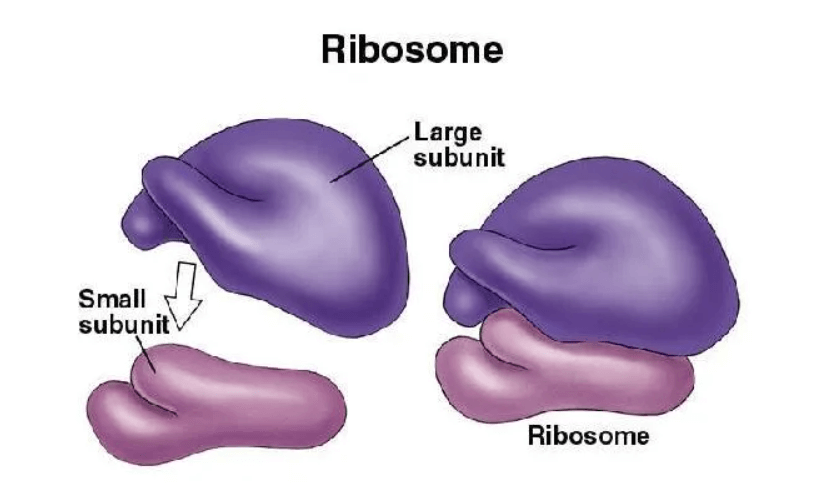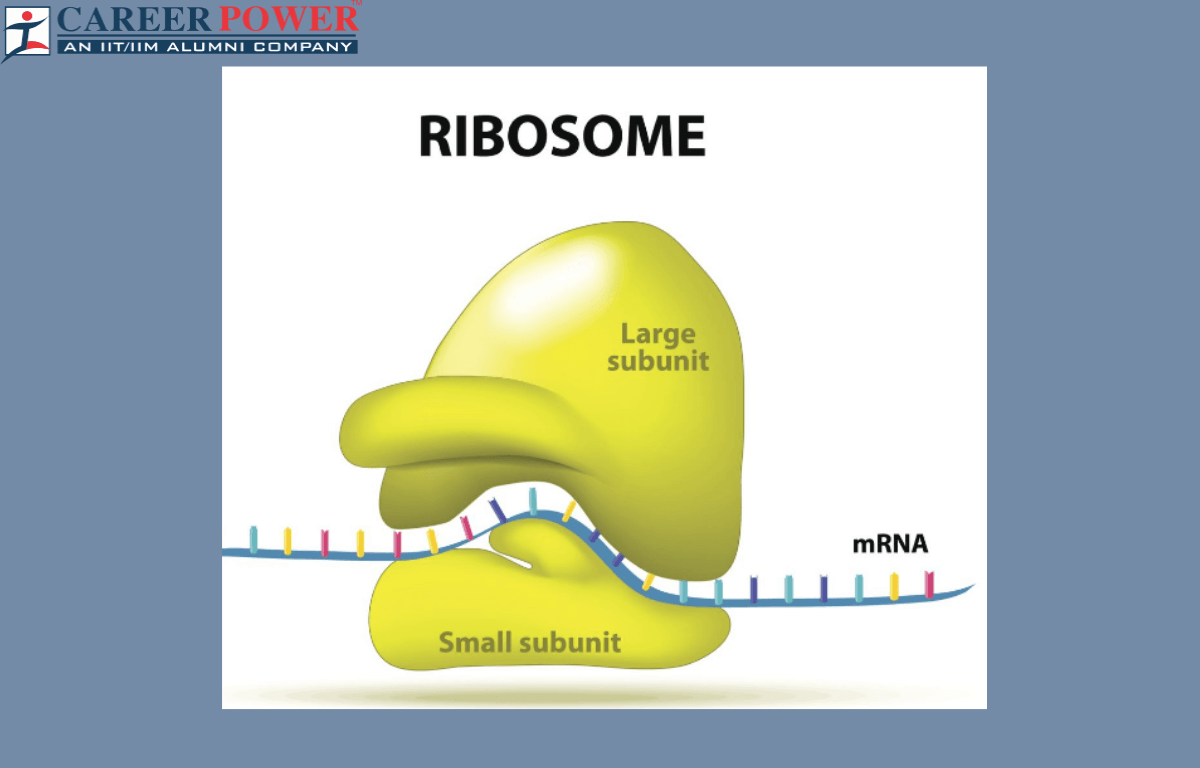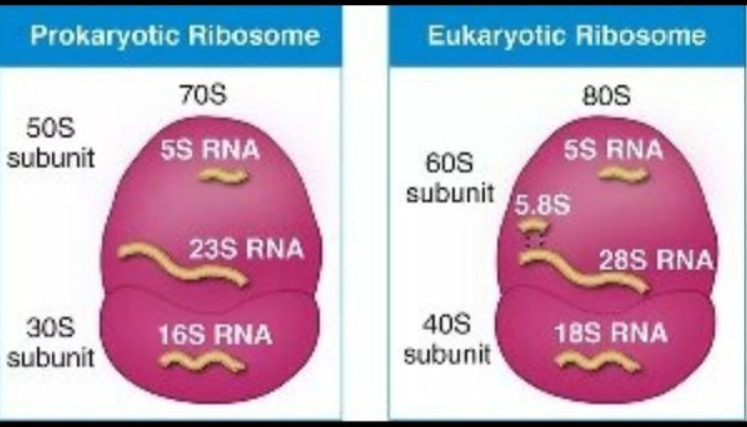Cell organelles are specialized structures within a cell that perform specific functions, crucial for the cell’s survival and proper functioning. Cell organelles include the rough endoplasmic reticulum (RER), ribosomes, Mitochondria, Golgi apparatus, etc. Each organelle has a specific role in maintaining the cell’s structure, supporting its metabolism, and facilitating various biological processes. Here we have briefly described the types, functions, and structure of ribosomes below in the article.
What are Ribosomes?
Ribosomes are cellular structures that play a key role in the process of protein synthesis. They are found in all living cells, including bacteria, plants, and animals. Ribosomes function as the site where messenger RNA (mRNA) is translated into proteins. The ribosomes were discovered by George Palade, Albert Claude, and Christian de Duve in the 1950s through electron microscopy studies. This translation process involves the assembly of amino acids in a specific order to form a polypeptide chain, which then folds into a functional chain, which then folds into a functional protein. Ribosomes are composed of RNA and proteins and are found in the cytoplasm of a cell or attached to the Endoplasmic Reticulum.

During protein synthesis, ribosomes read the information encoded in messenger RNA (mRNA) and use this information to assemble amino acids into a specific sequence, forming a functional protein. This process is essential for the growth, maintenance, and repair of living cells. Ribosomes can be found in all types of cells, from bacteria to human cells, highlighting their fundamental importance in Biology.
Structure of Ribosomes
Ribosomes are complex molecular machines that play a crucial role in protein synthesis. They consist of two main components: ribosomal RNA (rRNA) and ribosomal proteins. The description provided below is a simplified overview of ribosome structure. The actual structure of ribosomes is highly detailed and complex, involving intricate interactions between rRNA and ribosomal proteins.
- rRNA: Ribosomes contain multiple ribosomal RNA molecules, which are large RNA molecules that provide structural support and catalyze the formation of peptide bonds between amino acids during protein synthesis.
- Ribosomal Proteins: These proteins surround the rRNA, providing stability to the ribosomal structure and aiding in the proper folding of rRNA molecules. Ribosomal proteins also have specific binding sites for mRNA and tRNA, ensuring the correct assembly of the ribosome during translation.
Subunits of Ribosomes
The ribosomes have a characteristic structure, often described in terms of their two subunits: The small subunit and the large subunit. During protein synthesis, the small and large subunits of the ribosome come together on mRNA to create a functional ribosome, allowing the translation process to occur.
- Small Subunit: The small subunit is responsible for binding to the mRNA (messenger RNA) molecules. It also contains binding sites for tRNA (transfer RNA) molecules, which bring amino acids to the growing polypeptide chain.
- Large Subunit: The large subunit is involved in the formation of peptide bonds between amino acids. It also contains three binding sites for tRNA: the site (aminoacyl site), the P site (peptidyl site), and the E site (exit site). These sites facilitate the binding of tRNA molecules and the formation of the polypeptide chain.
Different Types of Ribosomes
The ribosomes are cellular structures responsible for protein synthesis. The ribosomes have many different types on the basis of location and on the basis of sedimentation coefficients. On the basis of location, ribosomes are of two types: free ribosomes and bound ribosomes, while on the basis of sedimentation coefficients ribosomes are also of two types: 70S ribosomes and 80S ribosomes.
Types of Ribosomes on the Basis of Location
Ribosomes can be broadly categorized into two namely: Free ribosomes and Bound ribosomes types based on their location and function within a cell. These two types of ribosomes perform similar functions in terms of protein synthesis, but their location and the destination of the synthesized proteins differ, leading to their classification as free or bound ribosomes.
| Types of Ribosomes on the Bases of Location | |
| Types of Ribosomes | Description |
| Free Ribosomes | These ribosomes are scattered throughout the cytoplasm and synthesize proteins that are used within the cell. |
| Bound Ribosomes | Bound ribosomes are attached to the rough endoplasmic reticulum or the nuclear envelope. They synthesize proteins that are either secreted from the cell, incorporated into the cell membrane, or sent to lysosomes for cellular functions. |
Free Ribosomes
These ribosomes are found freely floating in the cytoplasm of a cell. They synthesize proteins that are used within the cell itself. Free ribosomes are involved in the production of proteins that function within the cytoplasm or specific organelles of the cell.
Bound Ribosomes
Bound ribosomes are attached to the endoplasmic reticulum (ER), a network of membranes within the cell. They are involved in the synthesis of proteins that are either secreted from the cell, incorporated into the cell membrane, or sent to an organelle called the lysosome. Proteins synthesized by bound ribosomes are typically packaged in vesicles and transported to various cellular destinations.
Types of Ribosomes on the Basis of Sedimentation Coefficients
There are two types of ribosomes on the basis of sedimentation coefficients namely: 70S ribosomes and 80S ribosomes. These types of ribosomes are used to differentiate between ribosomes in Prokaryotic cells and Eukaryotic cells, respectively. In summary, the main difference lies in the composition and size of ribosomal subunits between Prokaryotic cells and Eukaryotic cells, leading to the classification of 70S ribosomes in prokaryotes and 80S ribosomes in eukaryotes.
| Types of Ribosomes on the basis of sedimentation coefficients | |
| Ribosome Type | Description |
| 70S Ribosomes | 70S ribosomes are found in prokaryotic cells, including bacteria, mitochondria, and chloroplasts. They consist of two subunits: 30S and 50S. The 70S designation represents the sedimentation coefficient. |
| 80S Ribosomes | 80S ribosomes are found in Eukaryotic cells, including plants, animals, fungi, and protists. They consist of two subunits: 40S and 60S. The 80S designation represents the sedimentation coefficient. |
70S Ribosomes
The 70S ribosomes are found in prokaryotic cells, such as bacteria and archaea. The 70S ribosome is composed of two subunits: a small 30S subunit and a large 50S subunit. When these two subunits combine, they form the functional 70 S ribosomes. The “S” stands for Svedberg units, which are a measure of the sedimentation rate of particles in a centrifugal field. The 70S ribosome is responsible for protein synthesis in prokaryotic cells.
80S Ribosomes
The 80S ribosomes are found in eukaryotic cells, including those of plants, animals, fungi, and protists. The 80S ribosome is also composed of two subunits: a small 40S subunit and a large 60S subunit. When these combine, they form the functional 80S ribosome. Eukaryotic ribosomes are slightly larger and more complex than prokaryotic ribosomes, reflecting the differences in cell structure and function between prokaryotic and eukaryotic organisms. The 80S ribosome is responsible for protein synthesis in eukaryotic cells.
Functions of Ribosomes
Ribosomes are essential cellular structures responsible for protein synthesis in both prokaryotic and eukaryotic cells. Ribosomes are central to the synthesis of proteins, which are vital molecules for various biological processes and structures within cells. Here are their primary functions:
- Protein Synthesis: Ribosomes are the cellular machinery where messenger RNA (mRNA) is translated into proteins. They read the genetic information in mRNA and assemble amino into polypeptide chains, which then fold into functional proteins.
- Translation: During translation, ribosomes facilitate the decoding of mRNA sequences into specific amino acids, following the genetic code. This process is crucial for the production of various proteins necessary for the cell’s structure and function.
- Polymerization: Ribosomes catalyze the formation of peptide bonds between adjacent amino acids, linking them together in a specific sequence dictated by the mRNA instructions.
- Ribosomal RNA (rRNA) Production: Ribosomes contain rRNA molecules, which play a structural and functional role in the ribosome itself. rRNA, along with proteins, constitutes the ribosomal subunits (small and large) that come together during protein synthesis.
- Quality Control: Ribosomes also have proofreading mechanisms to ensure the accuracy of translation. If an incorrect amino acid is added to the growing polypeptide chain, the ribosome can detect the error and correct it.




 50 Vegetables Name for Kids in English a...
50 Vegetables Name for Kids in English a...
 Food Chain: Definition, Types, Examples,...
Food Chain: Definition, Types, Examples,...
 Human Respiratory System: Definition, Di...
Human Respiratory System: Definition, Di...













